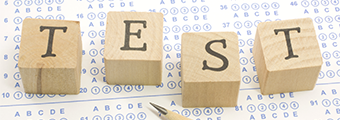Recognising the symptoms of claustrophobia, fear of enclosed spaces
At any age, the anxiety disorder present in claustrophobia is accompanied by a feeling of danger or suffocation. At an advanced level, it can lead to emotional manifestations that can sometimes take on an obsessive character. Panic disorder may occur in some cases. This considerably disrupts the person’s daily activities.

Common symptoms in phobias
When one suffers from a phobia, one will experience different physical manifestations related to this fear. The intensity of these physical sensations can vary from person to person.
If you suffer from claustrophobia, you may have already felt some of these physical sensations when you were in a closed place:
- an increase in your heart rate, the feeling that the heart
- The feeling is that you are going to die of a heart attack. This feeling may even make you feel as if you are going to die of a heart attack.
- you can suddenly feel very hot, sweaty
- Your breathing will also be affected by this fear. You may feel that your breathing is much shorter, cut off, that you are suffocating.
- Tremors may also be present, tremors in the legs or other parts of the body, which may give the impression that our body is going to give out, that we are going to fall.
- Feelings that your belly is contracted, even painful, which can even lead to feelings of nausea.
- more rarely, a feeling of not being in reality or in one’s own body, as if we were detached from the current situation, can also occur
- have a panic attack. Indeed, at times these symptoms can be so strong and overwhelming, that you will feel as if you are dying in this situation.
In addition to these physical sensations, there is a part of the anxiety that is more cognitive. So you may feel that you are going to die if you stay in this place any longer. This feeling of dying is not so much a physical sensation but also catastrophic thoughts that come into your head, imagining the worst of this situation.
Some of these symptoms may be caused by other medical conditions, so it is worthwhile to be assessed by a professional. So once the assessment has been made, and the presence of the phobia validated, you can be accompanied by people who can help you with this anxiety.
As you will have seen, the symptoms associated with anxiety are symptoms that can be extremely unpleasant and lead us to avoid situations that will promote them. So often, people suffering from claustrophobia will develop an escape behaviour from these anxiety-provoking situations. Thus, instead of taking the lift to go up to the 5th floor, you will take the stairs. However, this avoidance behaviour can also prevent you from carrying out certain personal or professional activities, for example you may refuse to work in certain places or refuse to go out with your friends.
Two symptoms predominate in the fear of enclosed spaces
Fear of running out of air and being cooped up
In claustrophobia, two key symptoms predominate: the fear of running out of air, of suffocating, and the fear of being restricted to a space, of not being able to escape. You have obvious manifestations of discomfort when you are in enclosed spaces, small rooms, a vehicle, and confined areas of any kind. However, it is not the place itself that frightens you but rather the fear of what might happen to you if you run out of air, for example.
In some cases, when you are unable to avoid what you are afraid of and you can no longer find a strategy to deal with the phobogenic object, a panic attack may occur. You know that being in an enclosed space is not dangerous, but you are terrified that you will not be able to get out.
From the fear of being locked up to the specific phobia
According to health professionals, the following criteria are necessary for a fear of confinement to qualify as a specific phobia:
- The fear must persist over time and be sufficiently excessive to prevent you from reasoning. This fear can arise from immediate exposure to the phobogenic situation as well as from the anticipation of it.
- When you find yourself in a locked-in situation, your reaction should be immediate and systematic. However, the intensity of the disorder may change.
- You are well aware of the absurdity, unreasonableness and excessiveness of your fear.
- As far as possible, you avoid all enclosed places where you might find yourself. If the situation is unavoidable, it will be experienced with great anxiety and distress.
- In everyday life, your activities must be severely disrupted.
All these signs must be present for more than six months and must not be explained by another disorder (e.g. agoraphobia or post-traumatic stress disorder).
This phobia can also be found in children. However, it is more difficult to recognise because it can manifest itself in different forms (screaming, crying or tantrums) rather than as a fear. It should also be noted that for them, a period of six months of unrest is necessary to reveal claustrophobia.


